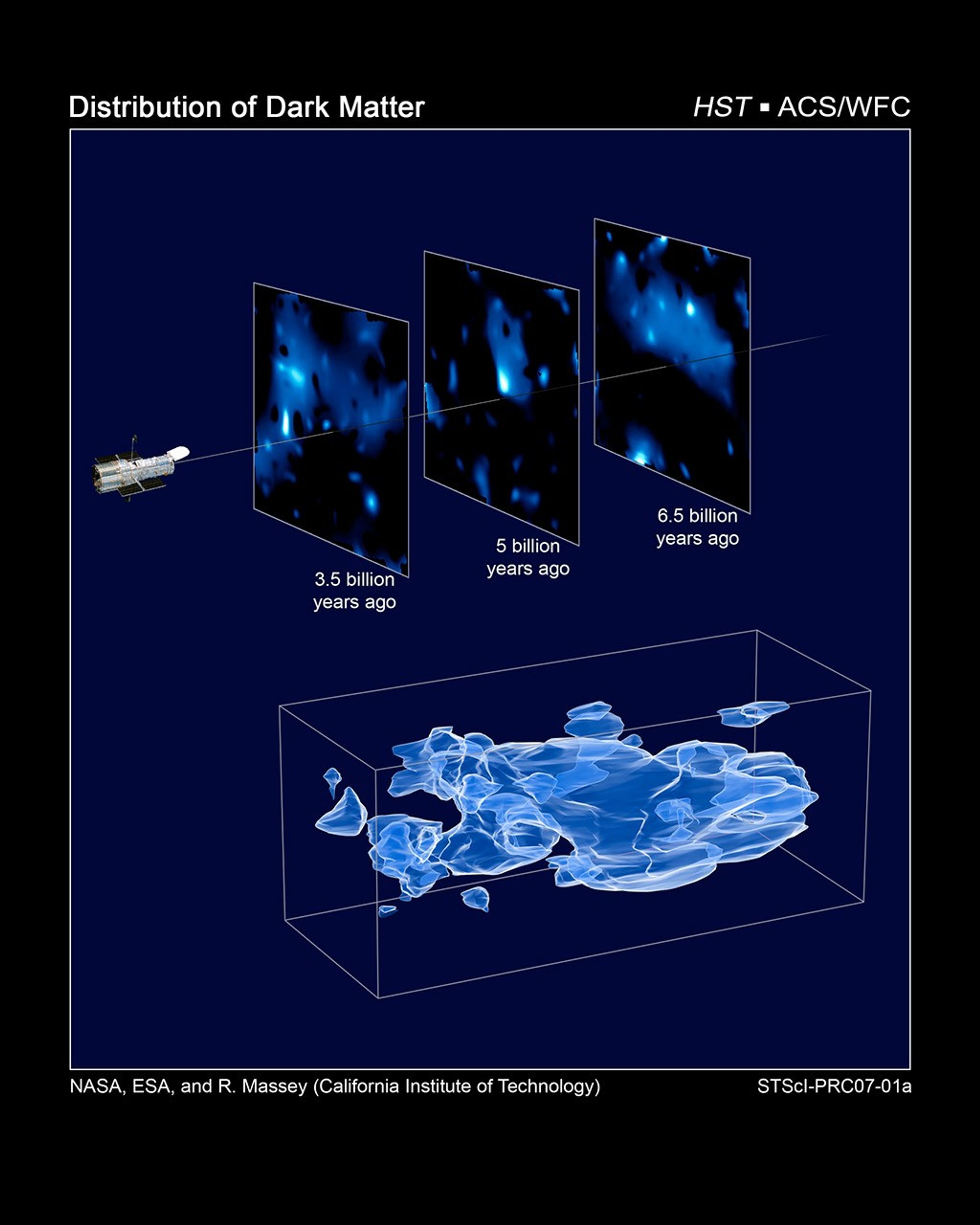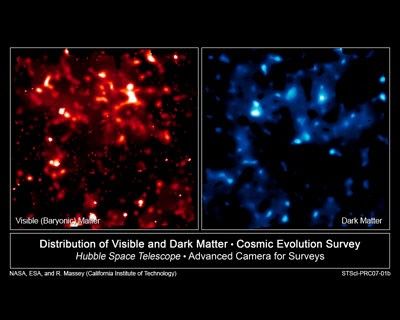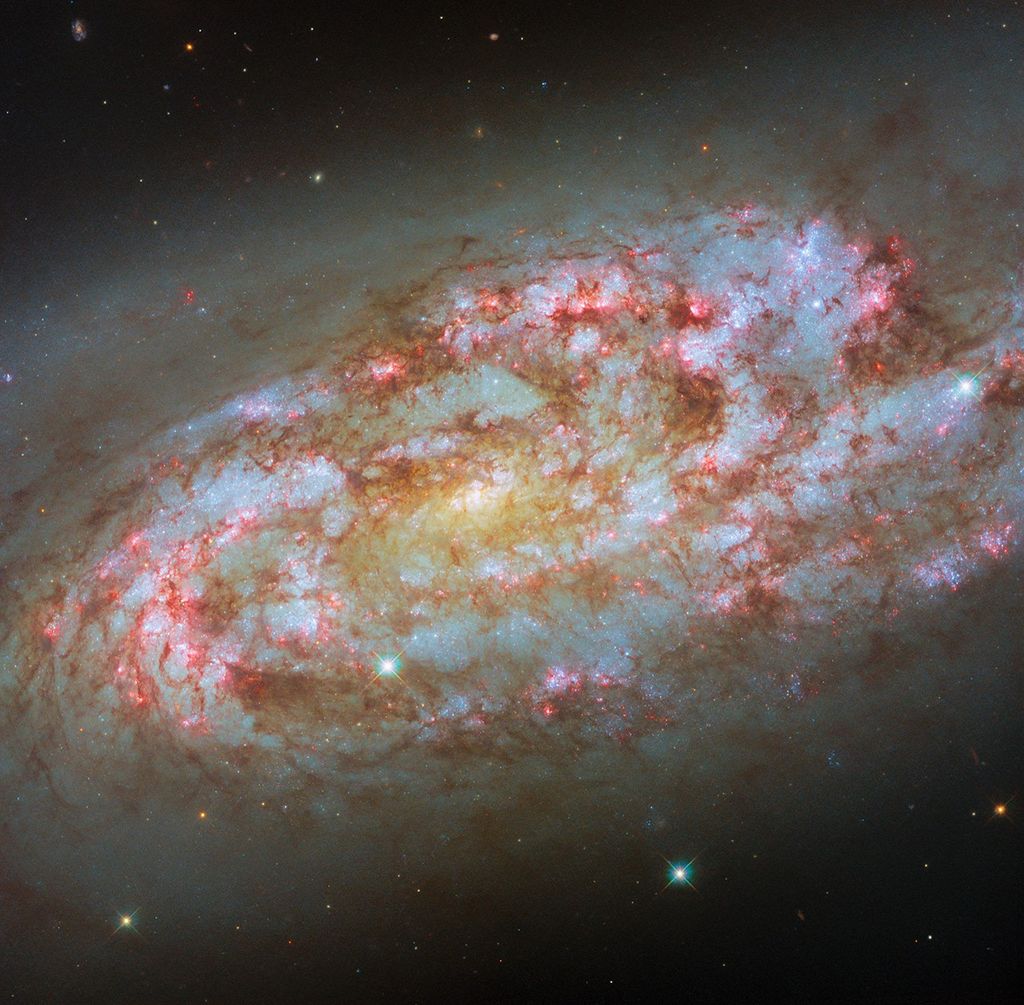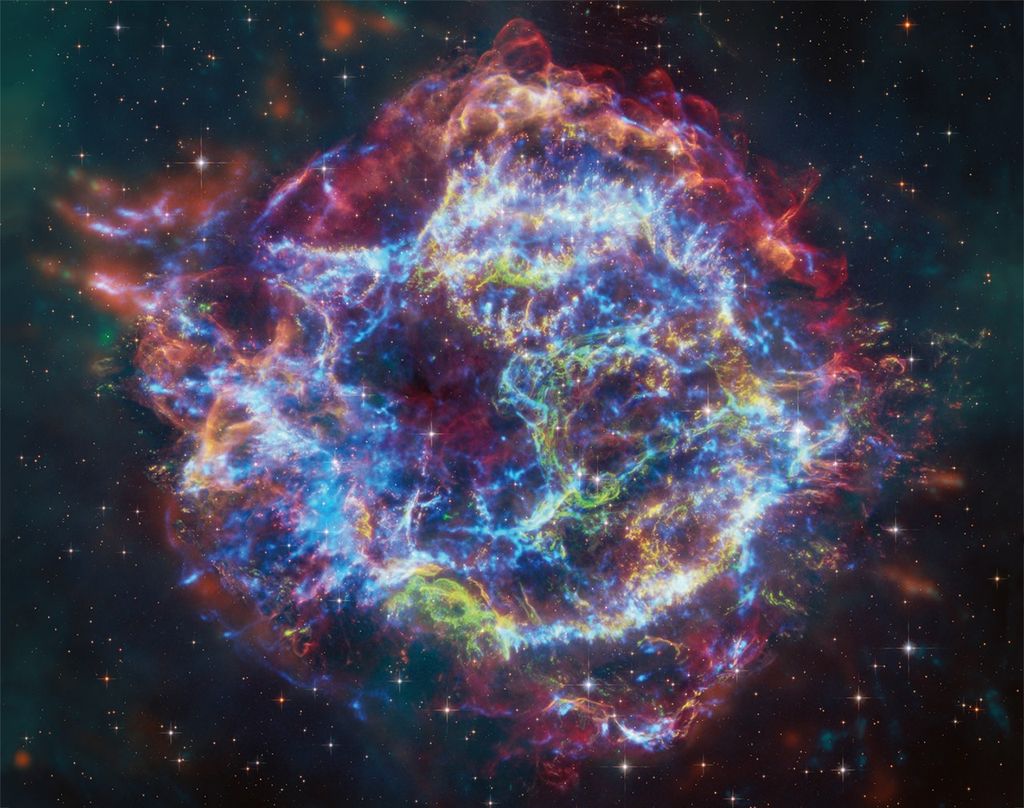1 min read
Three-Dimensional Distribution of Dark Matter in the Universe (with 3 slices of time)

This three-dimensional map offers a first look at the web-like large-scale distribution of dark matter, an invisible form of matter that accounts for most of the universe's mass. This milestone takes astronomers from inference to direct observation of dark matter's influence in the universe. Because of the finite speed of light, regions furthest away are also seen as they existed a long time ago. The map stretches halfway back in time to the beginning of the universe.
The map reveals a loose network of dark matter filaments, gradually collapsing under the relentless pull of gravity, and growing clumpier over time. This confirms theories of how structure formed in our evolving universe, which has transitioned from a comparatively smooth distribution of matter at the time of the big bang. The dark matter filaments began to form first and provided an underlying scaffolding for the subsequent construction of stars and galaxies from ordinary matter. Without dark matter, there would have been insufficient mass in the universe for structures to collapse and galaxies to form.
[Top] - Three slices through the evolving distribution of dark matter. The dataset is created by splitting the background source galaxy population into discrete epochs of time (like cutting through geologic strata), looking back into the past. This is calibrated by measuring the cosmological redshift of the lensing galaxies used to map the dark matter distribution, and binning them into different time/distance "slices". Each panel represents an area of sky nine times the angular diameter of the full Moon. Note that this fixed angle means that the survey volume is a really a cone, and that the physical area of the slices increases (from 19 Mpc on a side to 31 Mpc on a side) from left to right.
[Bottom] - When the slices across the universe and back into time are combined, they make a three-dimensional map of dark matter in the universe. The three axes of the box correspond to sky position (in right ascension and declination), and distance from the Earth increasing from left to right (as measured by cosmological redshift). Note how the clumping of the dark matter becomes more pronounced, moving right to left across the volume map, from the early universe to the more recent universe.
The dark matter distribution was mapped with Hubble Space Telescope's largest ever survey of the universe, the Cosmic Evolution Survey ("COSMOS"). To compile the COSMOS survey, Hubble photographed 575 adjacent and slightly overlapping views of the universe using the Advanced Camera for Surveys' (ACS) Wide Field Camera onboard Hubble. It took nearly 1,000 hours of observations. The distances to the galaxies were determined from their spectral redshifts, using the Subaru telescope in Hawaii.
About the Object
- R.A. PositionR.A. PositionRight ascension – analogous to longitude – is one component of an object's position.10h 0m 28.6s
- Dec. PositionDec. PositionDeclination – analogous to latitude – is one component of an object's position.02° 12' 21.0"
- ConstellationConstellationOne of 88 recognized regions of the celestial sphere in which the object appears.Sextans
About the Data
- Data DescriptionData DescriptionProposal: A description of the observations, their scientific justification, and the links to the data available in the science archive.
Science Team: The astronomers who planned the observations and analyzed the data. "PI" refers to the Principal Investigator.
- Object NameObject NameA name or catalog number that astronomers use to identify an astronomical object.Cosmological Evolution Survey Field, COSMOS Field
- Object DescriptionObject DescriptionThe type of astronomical object.Dark Matter Distribution Map, Astronomical Survey
- Release DateJanuary 7, 2007
- Science ReleaseHubble Maps the Cosmic Web of “Clumpy” Dark Matter in 3-D
- Credit
Related Images & Videos

Comparison of Normal Matter and Dark Matter's Large Scale Structure
These two false-color images compare the distribution of normal matter (red, left) with dark matter (blue, right) in the universe. The brightness of clumps corresponds to the density of mass. The map covers an area of sky nine times the angular diameter of the full Moon, and is...

COSMOS Field Compared to Other Hubble Surveys
Hubble Space Telescope has a narrow field of view, which is only a fraction of the angular diameter of the Moon. Certain research programs have devoted a substantial amount of Hubble observing time to survey comparatively larger areas of sky to address a wide range of galaxy...

Full Resolution Image Single HST ACS COSMOS Tile
This image covers one of 49 COSMOS tiles. It is created from ACS infrared data as well as Subaru broadband data. This tile is roughly 10 arcminutes in size. It is one-third of the full resolution COSMOS tiles. The Subaru image is courtesy of P. Capak and R. Massey (Caltech).
Share
Details
Claire Andreoli
NASA’s Goddard Space Flight Center
Greenbelt, Maryland
claire.andreoli@nasa.gov





































